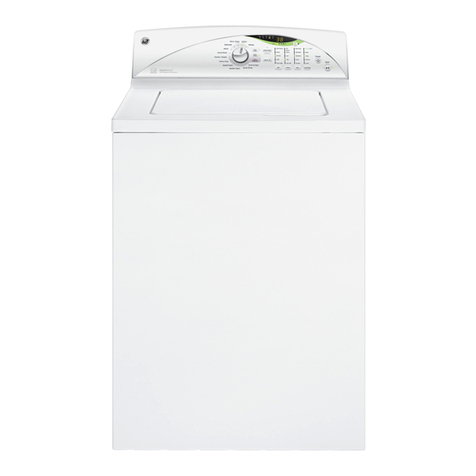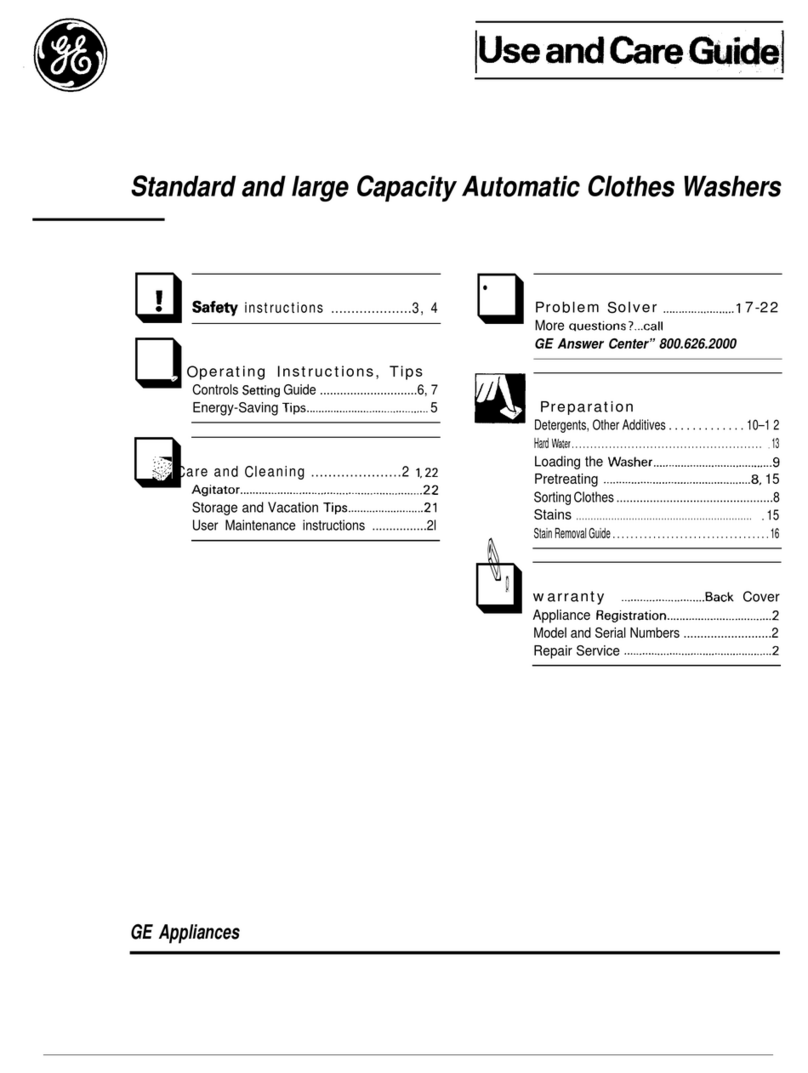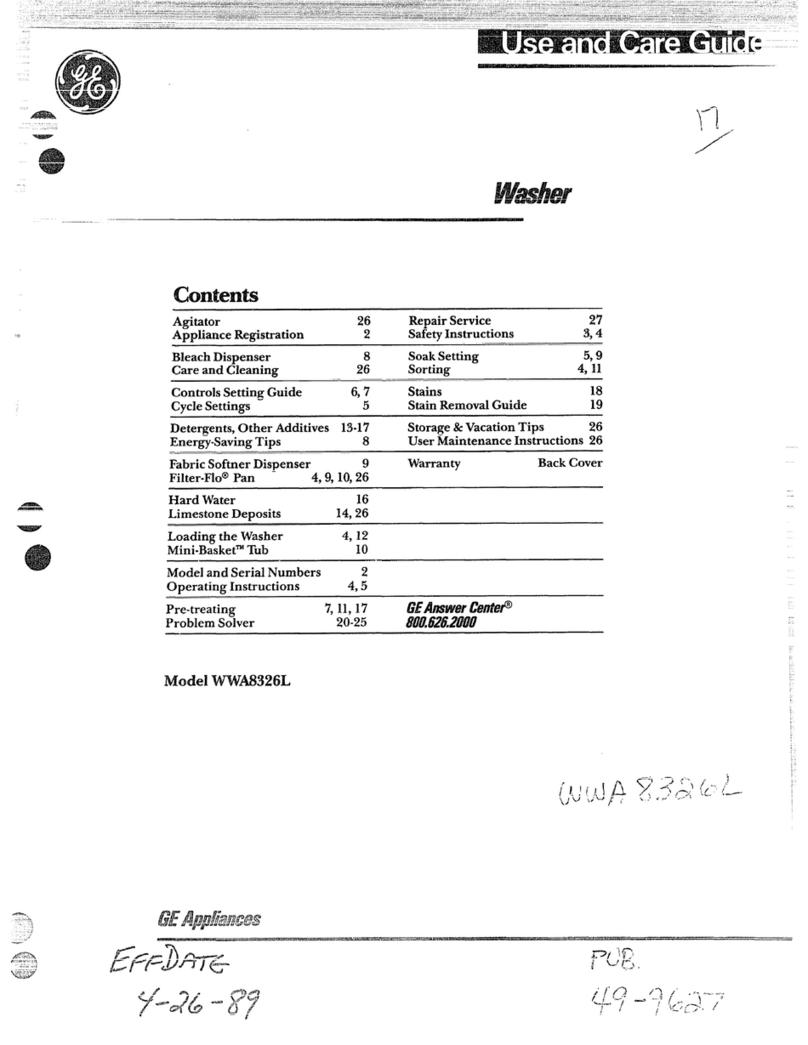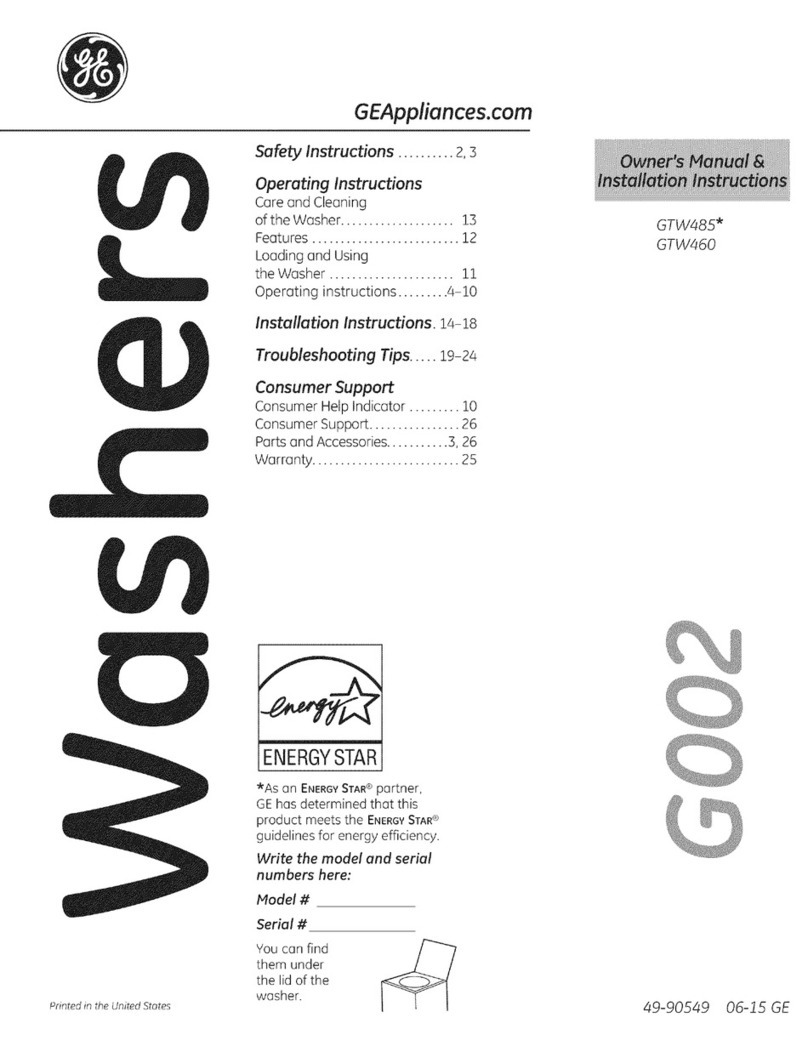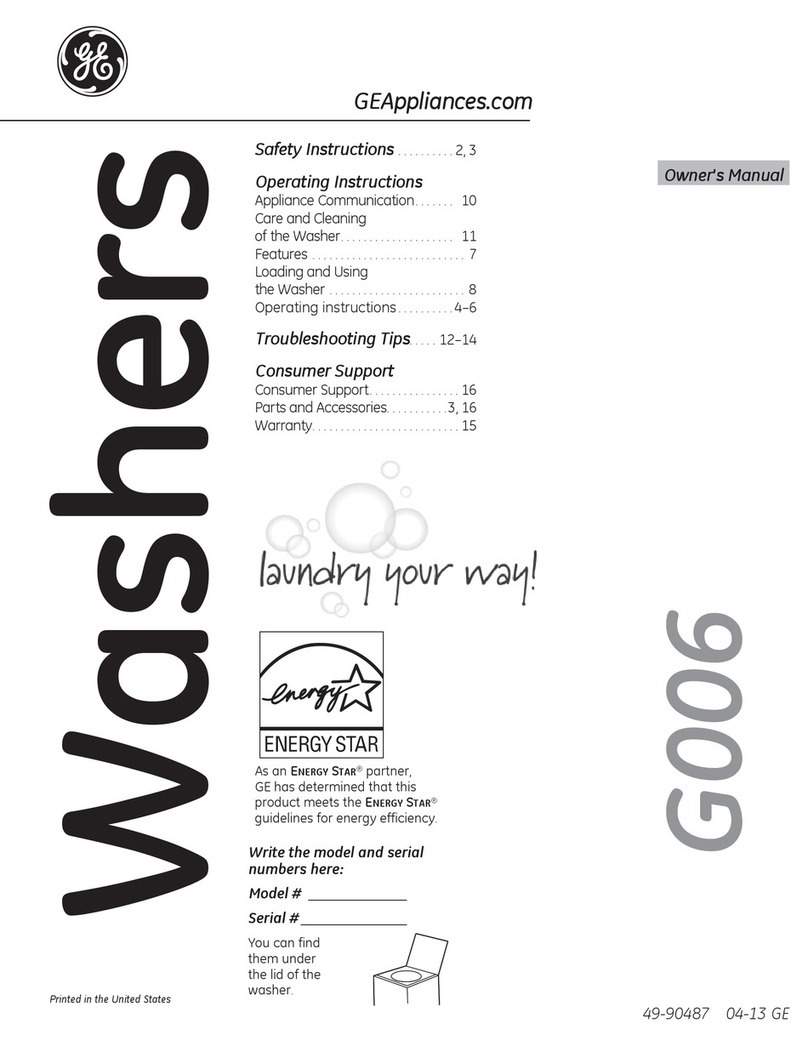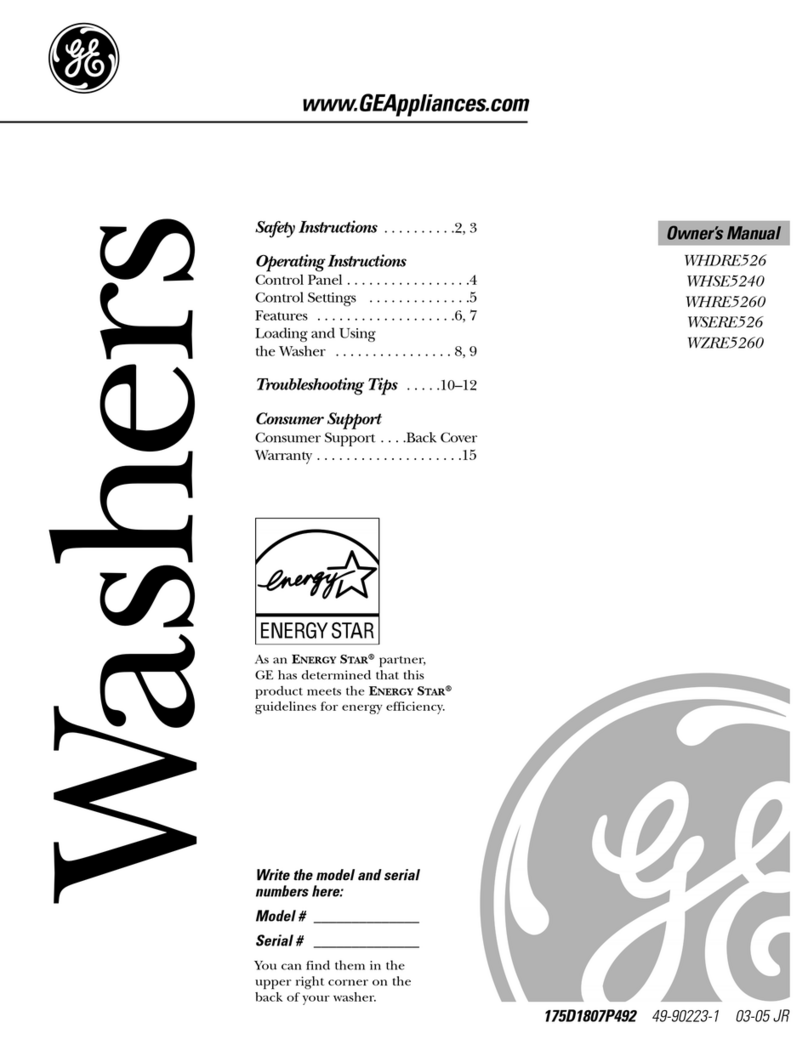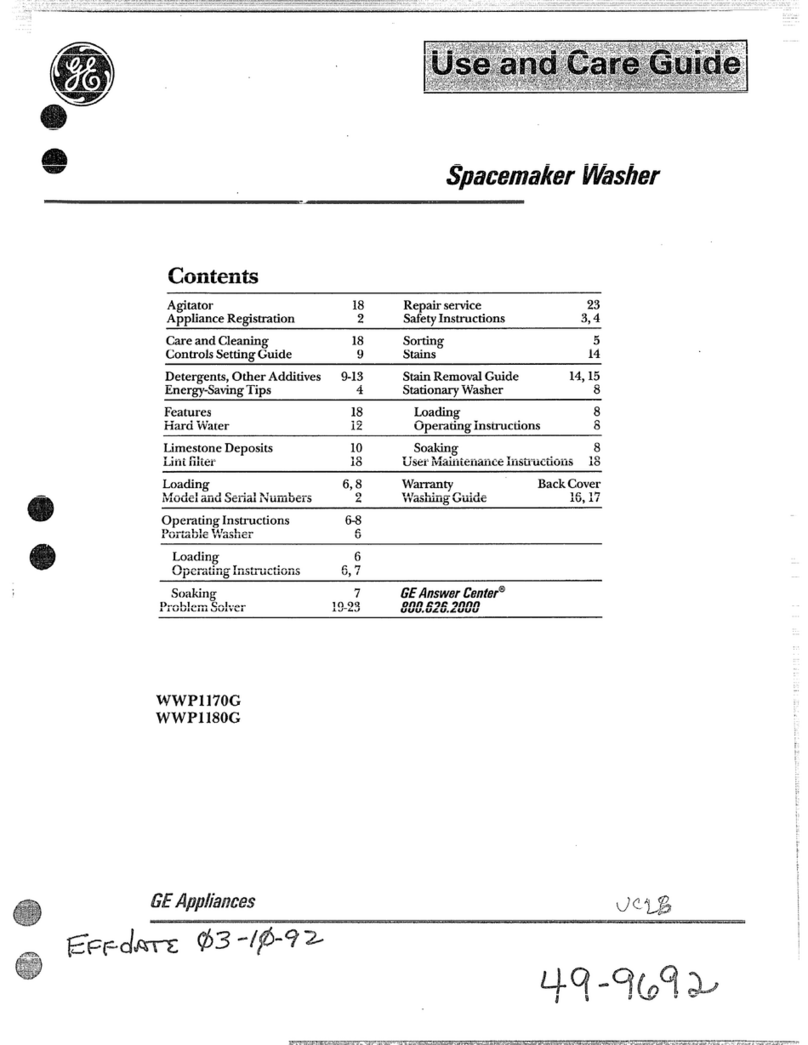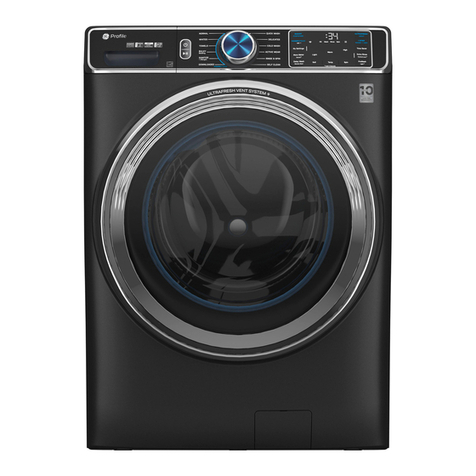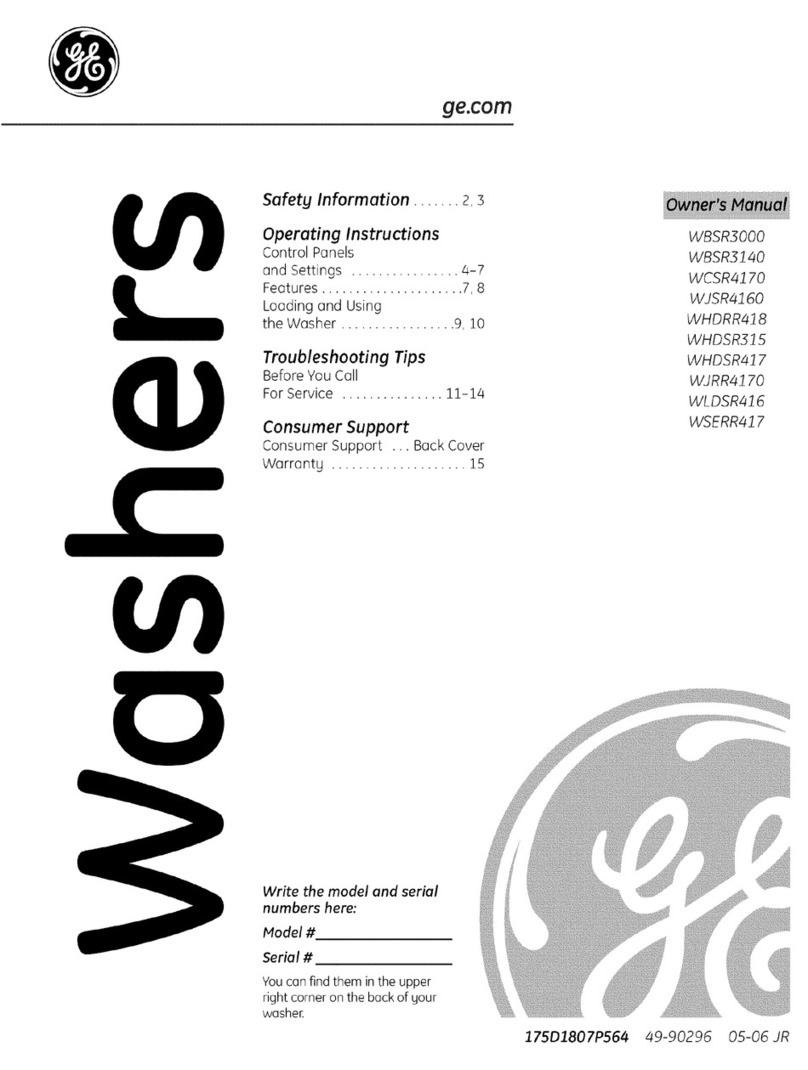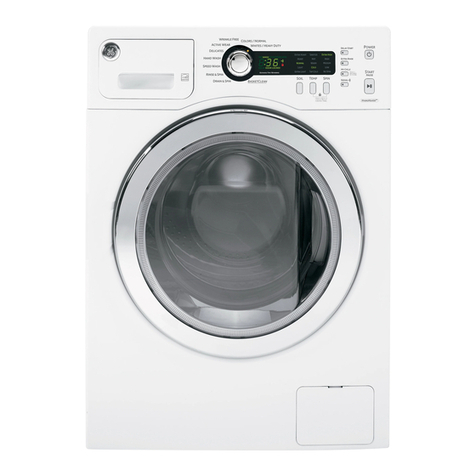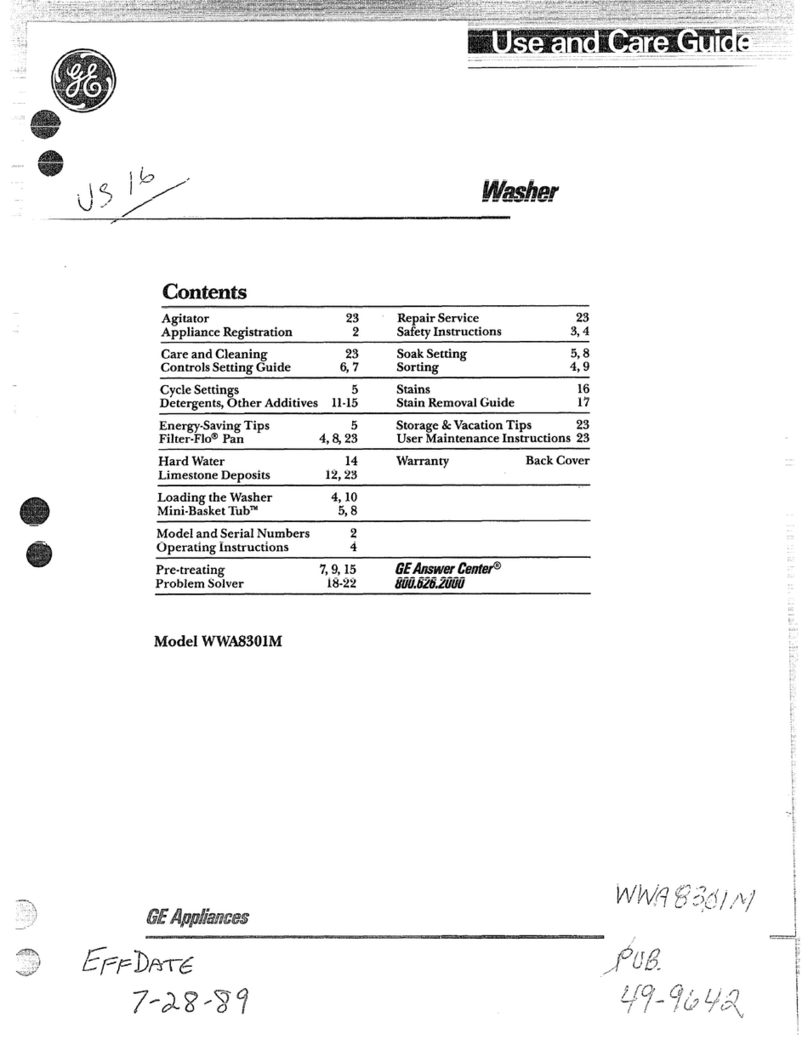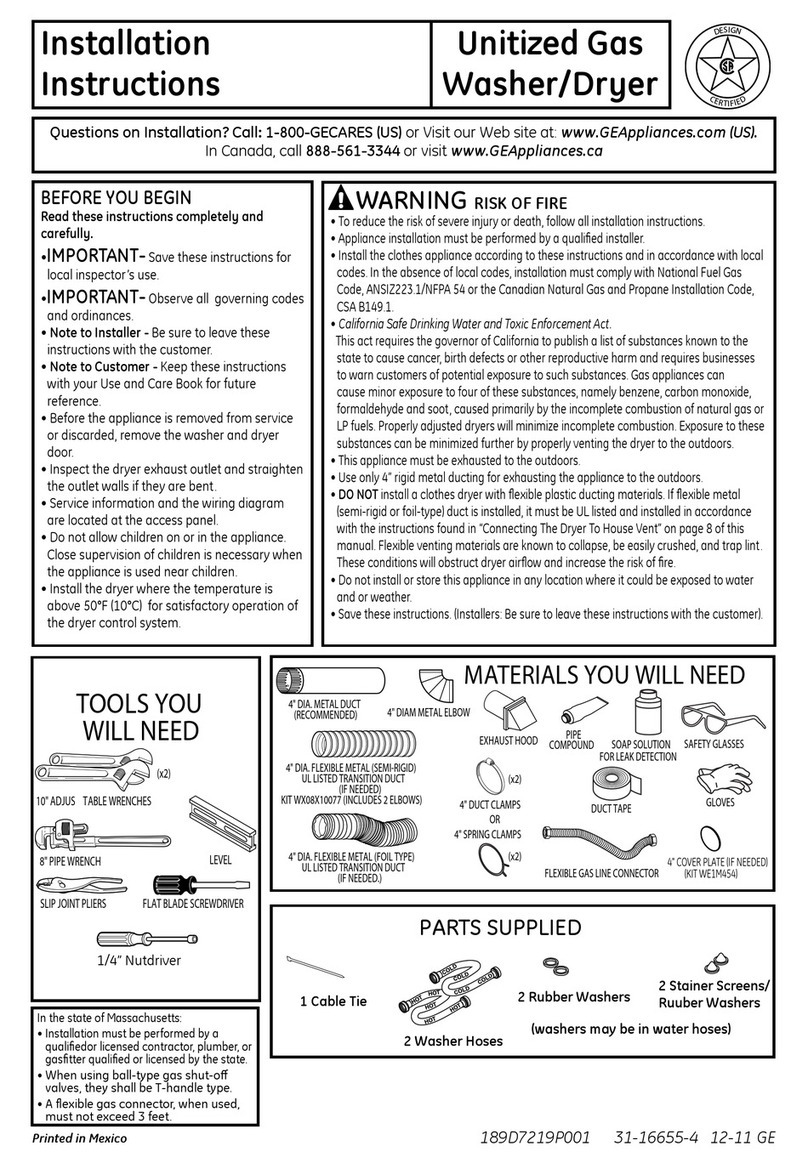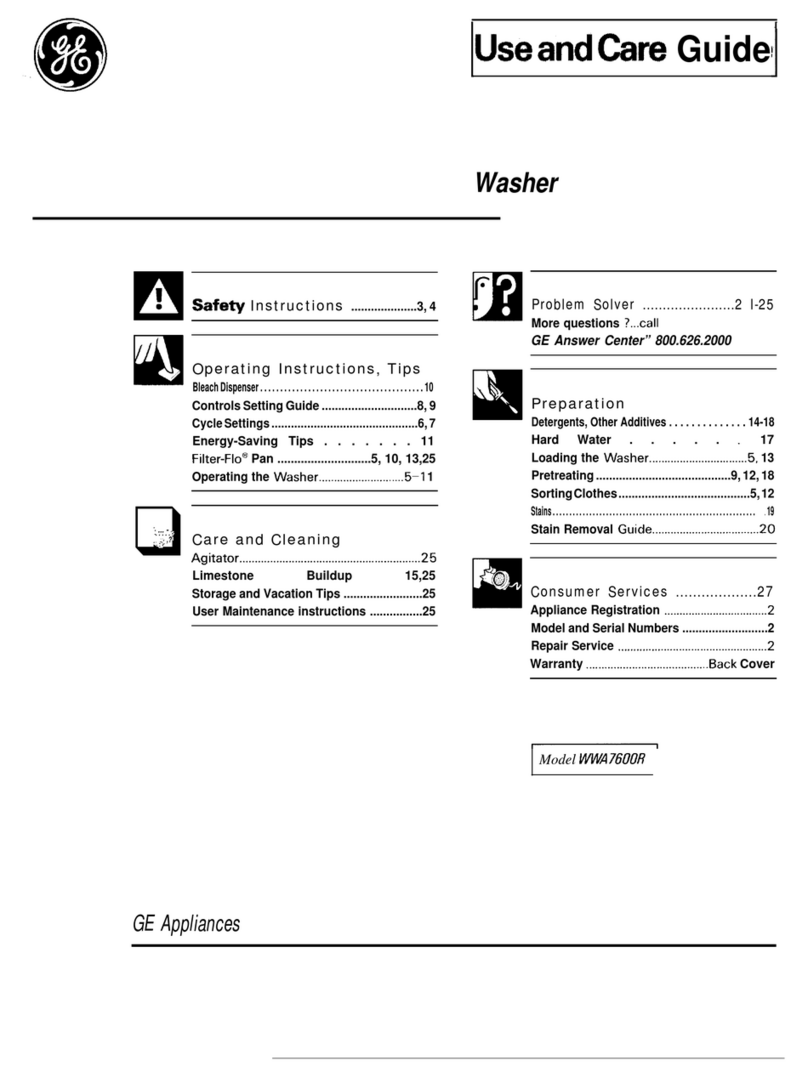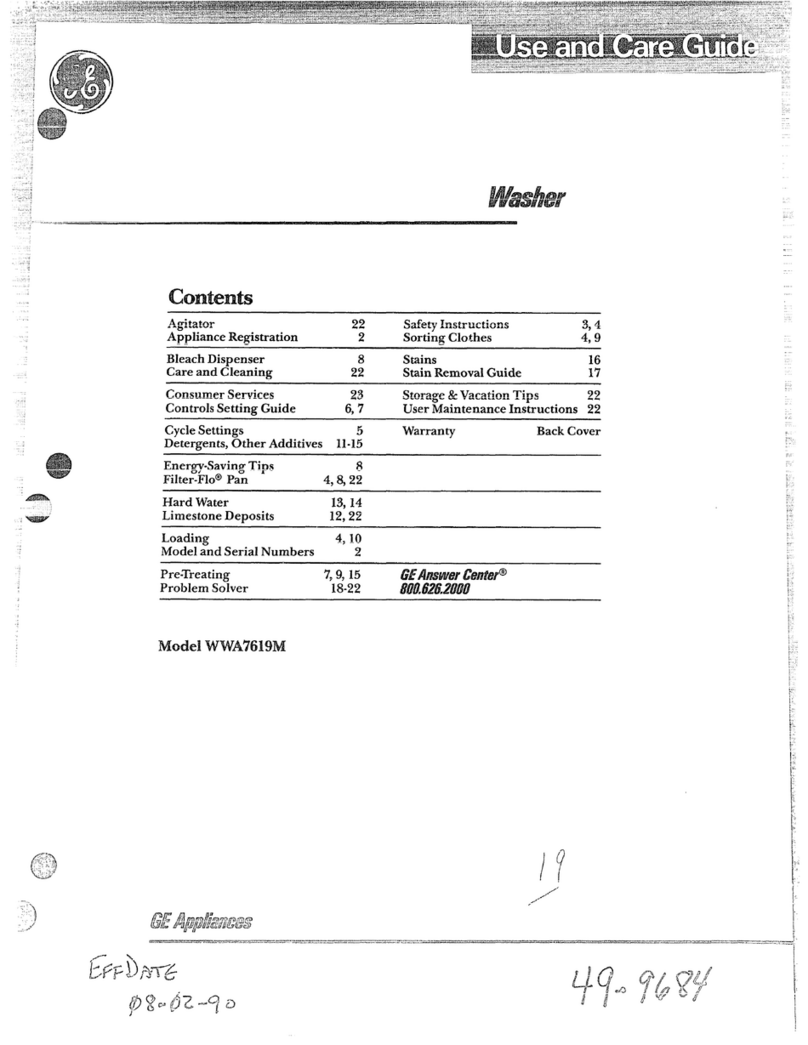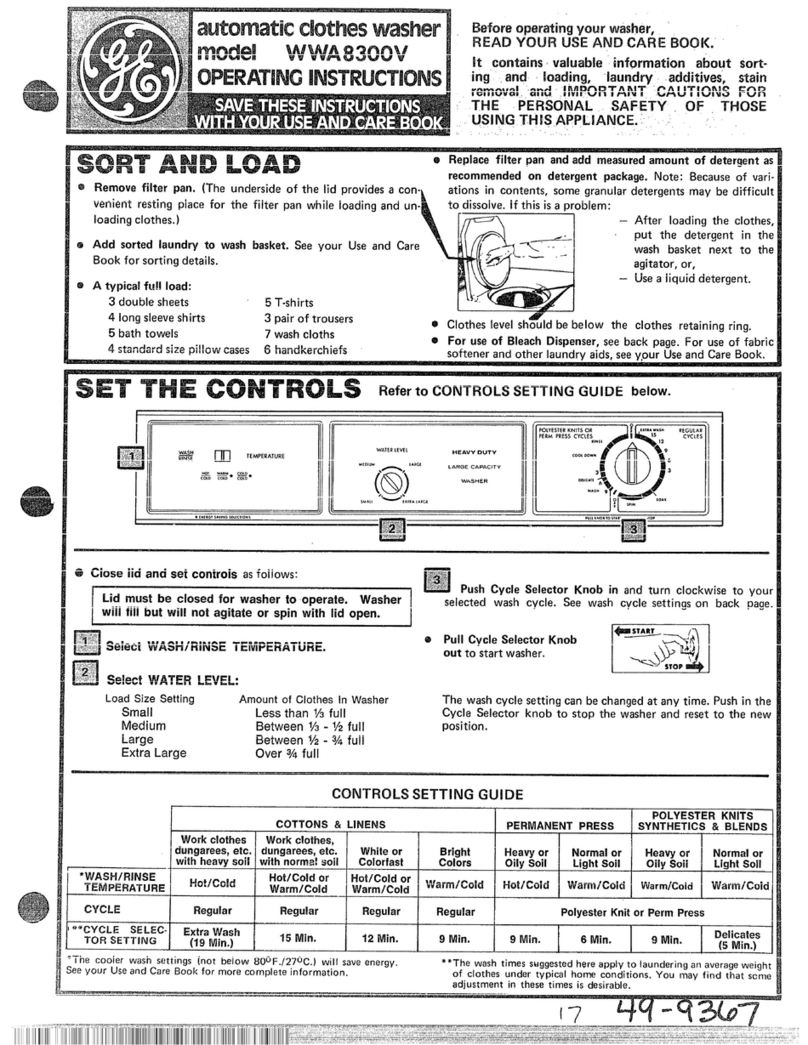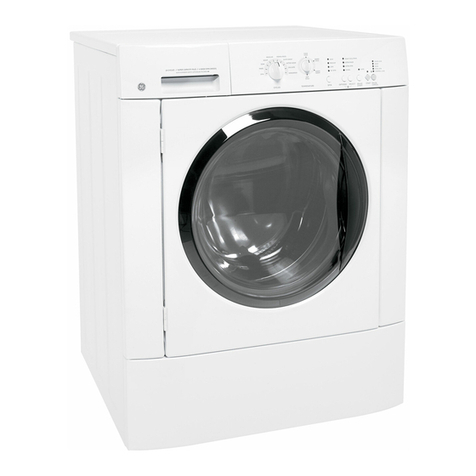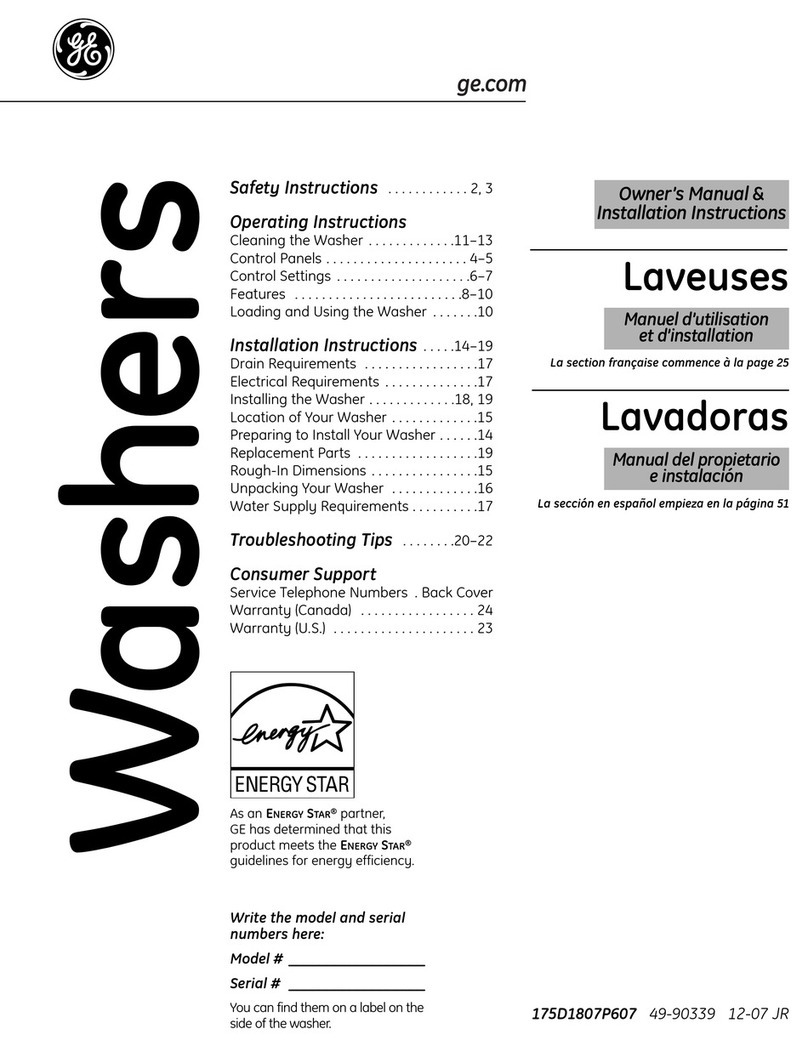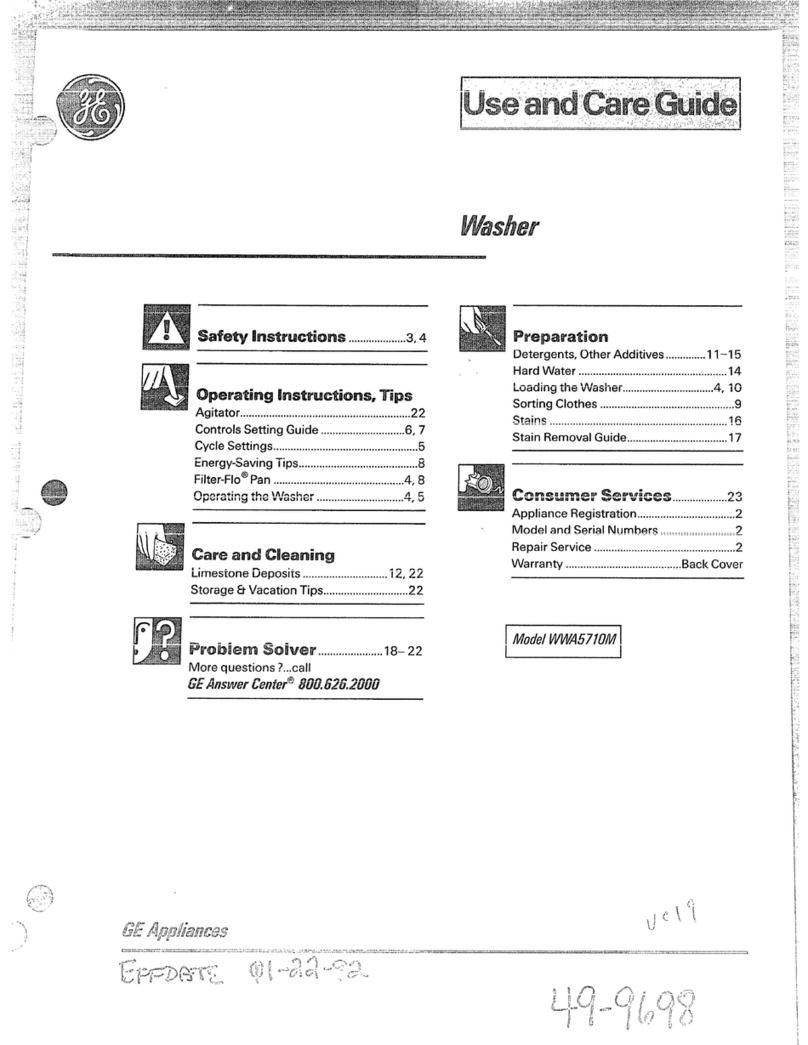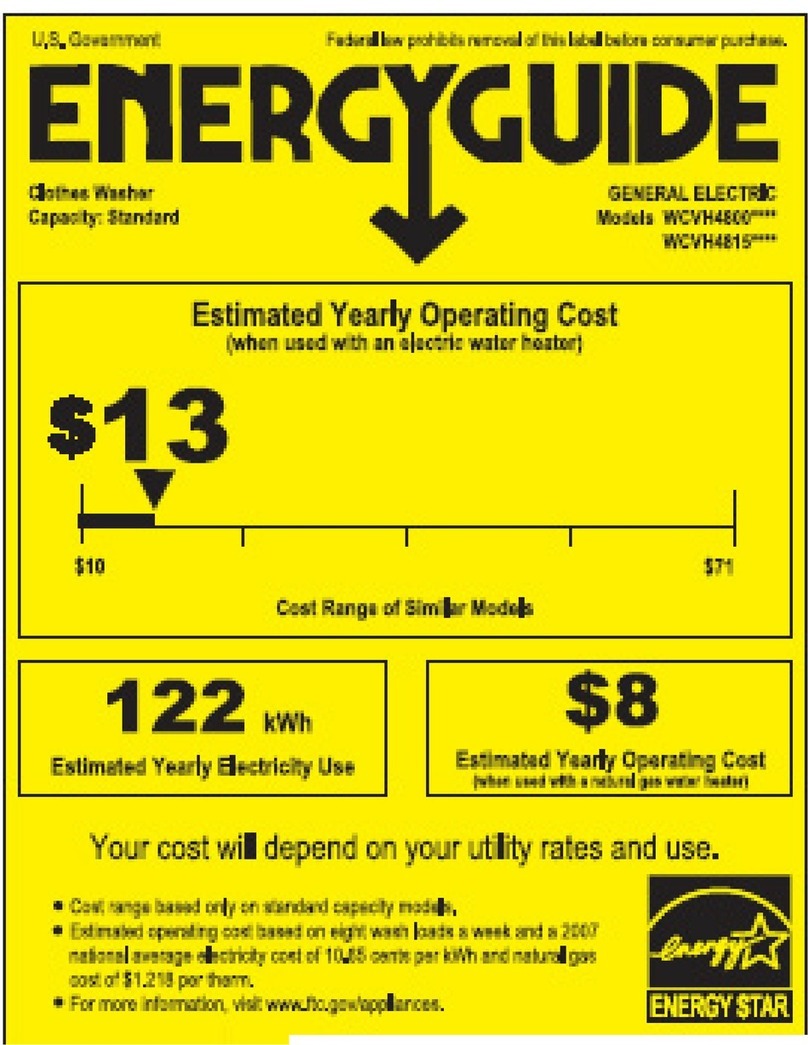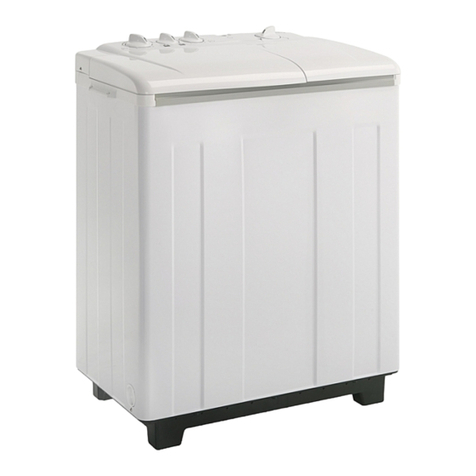
849-90566
Stain PreTreat
The Stain PreTreat feature allows you to indicate what stains are on the garments in your load. This feature incorporates a
patent pending treatment method. An initial water fill is performed at a temperature tailored to the stain type selected and to an
amount which enables a concentrated cleaning step. A stain scrubbing period, followed by an active soak,
is conducted to effectively treat the stain. Then additional water is added to the selected temperature and
the wash phase is conducted for the cycle selected.
This feature can be applied to most wash cycles as described in the cycle guide.
To use Stain PreTreat:
1. Select the desired wash cycle.
2. Select the stain to be treated under the Stain PreTreat options.
Stain PreTreat Guide
Category Recommended
Temperatures
Treatment/Wash Stain For best results,
before placing in washer:
Tomato Cool/Warm Sauce
Catsup
Salsa
Pretreat with liquid detergent or stain
remover product; rinse with cool water.
Dirt Cool/Warm Dirt
Clay
Mud
Allow dirt to dry; remove loose dirt using
a brush. Rinse with cool water.
Grass Cold/Warm Grass
Lipstick
Chocolate
Gravy
Mayonnaise
BBQ Sauce
Pretreat with liquid detergent or stain
remover product. Brush lightly; rinse
with cold water.
Wine Cool/Warm Wine
Soda
Kool-Aid
Tea
Coffee
Juice
Beer
Pretreat with mixture of Oxi product and
cool water. Add Oxi product along with
detergent in the washer.
• Recommended temperatures are optimal for stain removal performance; adjust temperature selection to suit load being washed.
• Ensure stain is completely removed after wash cycle and before placing in dryer; very tough stains may require a second treatment.
ECycle Options
Deep Fill
Select the Deep Fill feature for loads where extra water is needed. The Deep Fill feature is recommended for special case
loads only, not for typical use.
Press the Deep Fill button once before starting the cycle to add an incremental amount of water to the wash load. Holding the
Deep Fill button for 3 seconds will provide the deepest fill level possible; this will increase cycle time due to the additional time it
takes to fill the washer.
To cancel the option if desired, press the Deep Fill button again.
NOTE: The Deep Fill button can also be pressed after the washer has completed filling and is in the wash phase if additional
water is desired. To stop the extra fill, press the Deep Fill button again and the water will stop.
Auto Soak
This option begins with a brief agitation, soaks for a specified period of time, then moves through the rest of the cycle automatically.
2nd Rinse
When you use extra detergent or bleach to clean heavily soiled clothes, use the 2nd Rinse option to better remove additional residues.
Extra Spin
Select to provide additional spin time, increasing energy efficiency through reducing drying times.
2nd Rinse + Extra Spin
Provides both a second rinse and an extra spin.
Deep Rinse
Set this option to provide a deep rinse or when using fabric softener. This option may change other settings (e.g. Spin may go to
a higher setting) to maximize performance.
NOTE: If liquid fabric softener is desired, wait until the Rinse cycle status light is illuminated and the final rinse fill is complete
before adding the recommended amount of liquid fabric softener directly to the rinse bath. When adding liquid fabric softener,
pour into deeper areas of rinse water while avoiding direct contact with fabric.
Getting started
USING THE WASHER
Settings
Select settings for agitation (Soil) and water temperature (Temp).
NOTE: Longer Spin times typically reduce dryer time/energy usage (i.e. reduces total energy when using both a washer and a dryer).
D

